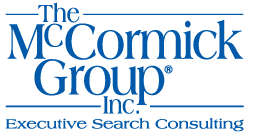
Are regulatory policy law practices a new trend? McCormick Group Principal Ivan Adler weighs in with The National Law Journal for its annual report on the lobbying industry.
By Katelyn Polantz | October 19, 2015
Lobbyist Darrell Conner of K&L Gates likens a Washington public-policy practice to a three-dimensional chessboard, part of a daily mental challenge born decades ago from a grand vision of the lobbying game. But over the past few years, that chessboard has expanded even beyond its own dimensions.
“It’s a much more sophisticated business in which we operate,” Conner told The National Law Journal.
The NLJ’s annual Influence 50 ranking, included in this edition, attempts to capture the third dimension of lobbying: the part of the practice that’s never publicly reported. Most firms self-report to the NLJ their public-policy group revenue totals.
Four law firms said they took in $100 million or more for public-policy work — Akin Gump Strauss Hauer & Feld; K&L Gates; Wilmer Cutler Pickering Hale and Dorr; and Atlanta-based firm King & Spalding, which reported the most public-policy business in 2014.
King & Spalding’s $117.8 million topped our chart of 50 firms. That revenue includes $4.45 million in traditional lobbying work disclosed to Congress and through the Foreign Agents Registration Act. The firm described another $113.4 million as other public-policy business that includes about a dozen different types of influence tasks such as strategic consulting, public relations, grassroots organizing, political law and state attorneys general lobbying. The firm said it does the largest amount of its public-policy work in government investigations, an “area of focus” that brings in lawyers and lobbyists from across several different traditional practices, according to Tom Spulak, chairman of the firm’s government advocacy and public-policy practice group.
“The thing I don’t think people appreciate is the size and the breadth of King & Spalding’s Washington office,” Spulak said. “People say we’re an Atlanta firm. But this is a big office, and all of the focus is on the government.”
King & Spalding reported almost $43 million in public-policy revenue to the NLJ for this survey last year. That’s partly because our survey has changed. This year, we asked firms to measure their influence work more broadly so it focuses more on their nonlitigation regulatory activities. Some firms have redrawn and expanded in recent years their public-policy departments to commingle lobbyists, litigators and regulatory lawyers.
Regardless of how a firm defines the work, our survey results show there’s a growing hidden world of influence that sweeps in millions of dollars each year for law firms and for many of the largest lobby shops. The lawyers and lobbyists who make this money still represent clients’ political points of view and still, in essence, lobby. But they count the work separately from what federal disclosure laws require they report to Congress quarterly as so-called LDA numbers, or information published under the Lobbying Disclosure Act of 1995.
According to our data, corporate and private clients bought more than $1.5 billion of public-policy influence services from the 50 top law firms and lobbying organizations last year. Of that revenue, firms disclosed 35 percent to Congress. That portion represents the traditional pound-the-pavement legislative advocacy on Capitol Hill and before some political appointees that results in quarterly filings.
Fifteen law firms said their largest sources of public-policy revenue came from other approaches that don’t require disclosures to Congress. This type of work often still relies on the skills of lobbyist-lawyers to petition, persuade and build support. The lawyers instead focus on nonlegislative branches of government, such as agencies, commissions and executive branch departments.
“In congressional lobbying, the work is done when the bill is signed,” said Micah Green, co-chairman of Steptoe & Johnson LLP’s government-affairs and public-policy group. “We keep the Hill informed and link the regulatory, the compliance, the litigation. It’s a continuum of services.”
WHAT FIRMS ARE DOING
Firms, especially law firms, put much of their influence power toward regulatory policy. And large firms, such as Dentons, Covington & Burling, and Wilmer, say clients have clamored for more of the influence service known to some in Big Law as “law-plus.”
“When we ask clients what their most significant challenge is
The approach isn’t new, however; it’s just marketed differently. Regulatory law practices have “always been there … since Louis Brandeis was on the Supreme Court,” said Ivan Adler, a Northern Virginia-based headhunter who specializes in placing lobbyists at firms. “The reason these law firms are in Washington is that.”
The slowdown of legislation out of Congress has caused more lobbyists to focus their skills on executive branch players, several lobbyists at law firms said […]
To read the rest of the article, go to | National Law Journal
To contact Ivan Adler, go to | Ivan Adler
Image source | National Law Journal

